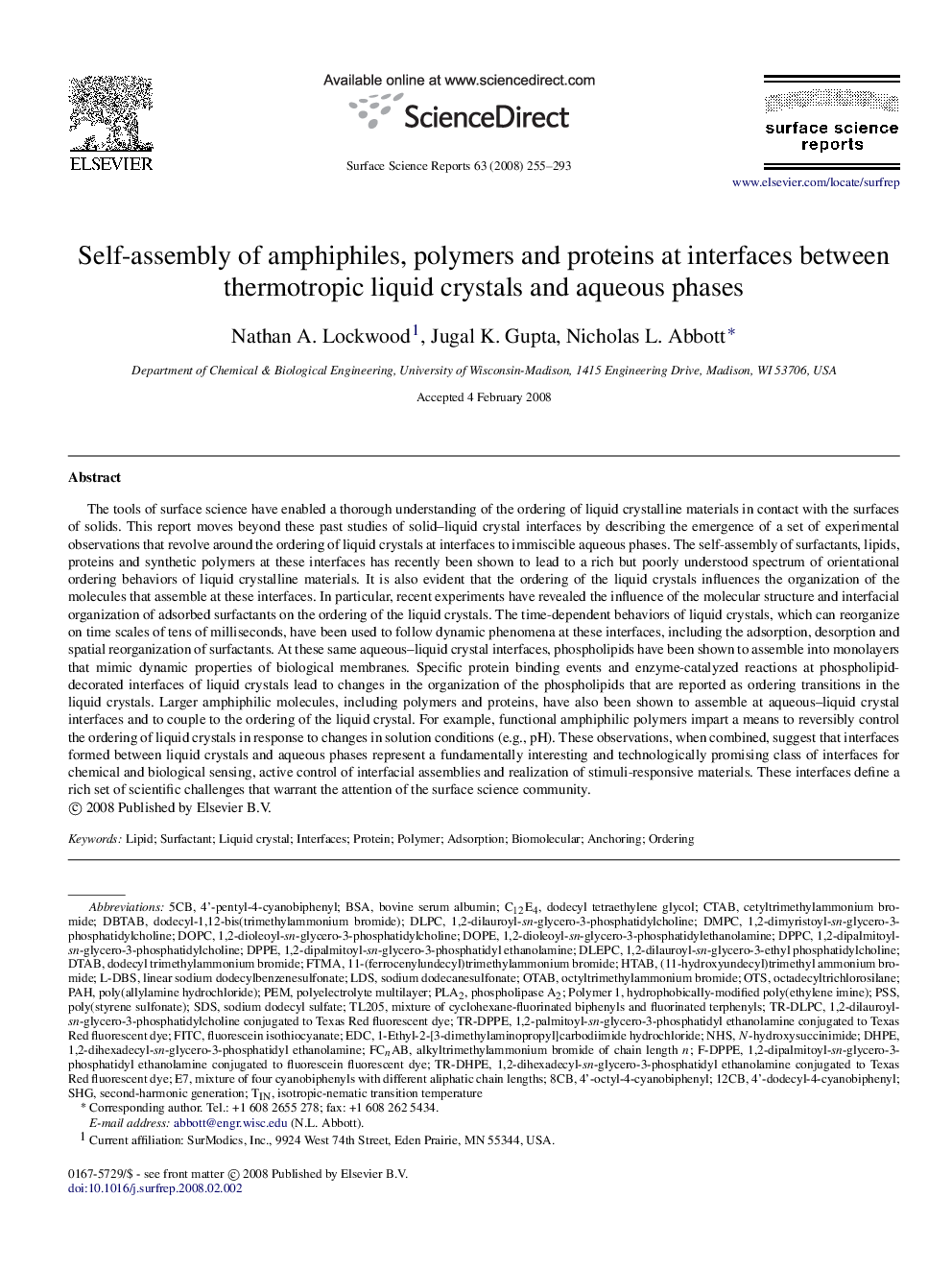| Article ID | Journal | Published Year | Pages | File Type |
|---|---|---|---|---|
| 7845560 | Surface Science Reports | 2008 | 39 Pages |
Abstract
The tools of surface science have enabled a thorough understanding of the ordering of liquid crystalline materials in contact with the surfaces of solids. This report moves beyond these past studies of solid-liquid crystal interfaces by describing the emergence of a set of experimental observations that revolve around the ordering of liquid crystals at interfaces to immiscible aqueous phases. The self-assembly of surfactants, lipids, proteins and synthetic polymers at these interfaces has recently been shown to lead to a rich but poorly understood spectrum of orientational ordering behaviors of liquid crystalline materials. It is also evident that the ordering of the liquid crystals influences the organization of the molecules that assemble at these interfaces. In particular, recent experiments have revealed the influence of the molecular structure and interfacial organization of adsorbed surfactants on the ordering of the liquid crystals. The time-dependent behaviors of liquid crystals, which can reorganize on time scales of tens of milliseconds, have been used to follow dynamic phenomena at these interfaces, including the adsorption, desorption and spatial reorganization of surfactants. At these same aqueous-liquid crystal interfaces, phospholipids have been shown to assemble into monolayers that mimic dynamic properties of biological membranes. Specific protein binding events and enzyme-catalyzed reactions at phospholipid-decorated interfaces of liquid crystals lead to changes in the organization of the phospholipids that are reported as ordering transitions in the liquid crystals. Larger amphiphilic molecules, including polymers and proteins, have also been shown to assemble at aqueous-liquid crystal interfaces and to couple to the ordering of the liquid crystal. For example, functional amphiphilic polymers impart a means to reversibly control the ordering of liquid crystals in response to changes in solution conditions (e.g., pH). These observations, when combined, suggest that interfaces formed between liquid crystals and aqueous phases represent a fundamentally interesting and technologically promising class of interfaces for chemical and biological sensing, active control of interfacial assemblies and realization of stimuli-responsive materials. These interfaces define a rich set of scientific challenges that warrant the attention of the surface science community.
Keywords
DOPC, 1,2-dioleoyl-sn-glycero-3-phosphatidylcholineDLPC, 1,2-dilauroyl-sn-glycero-3-phosphatidylcholinePAH, poly(allylamine hydrochloride)CTAB, cetyltrimethylammonium bromideDMPC, 1,2-dimyristoyl-sn-glycero-3-phosphatidylcholineDOPE, 1,2-dioleoyl-sn-glycero-3-phosphatidylethanolamineDPPC, 1,2-dipalmitoyl-sn-glycero-3-phosphatidylcholineNHS, N-hydroxysuccinimidePLA2, phospholipase A2BSA, bovine serum albuminAnchoringAdsorptionInterfacesSurfactantFITC, fluorescein isothiocyanateLipidOrderingProteinPolymerLiquid crystalSDS, sodium dodecyl sulfate
Related Topics
Physical Sciences and Engineering
Chemistry
Physical and Theoretical Chemistry
Authors
Nathan A. Lockwood, Jugal K. Gupta, Nicholas L. Abbott,
